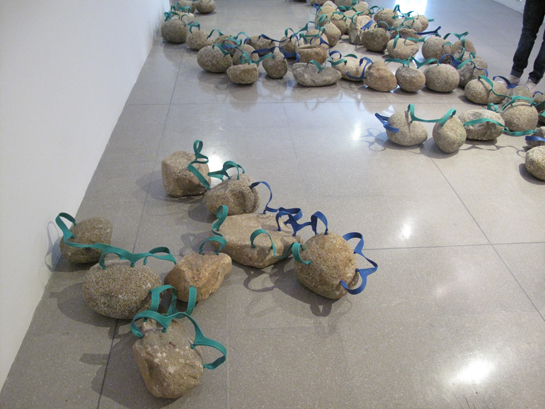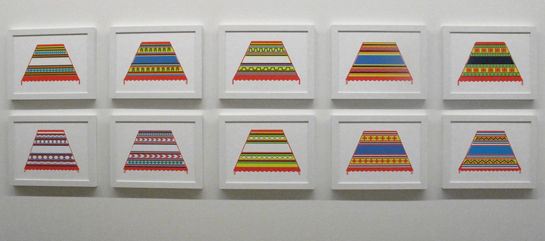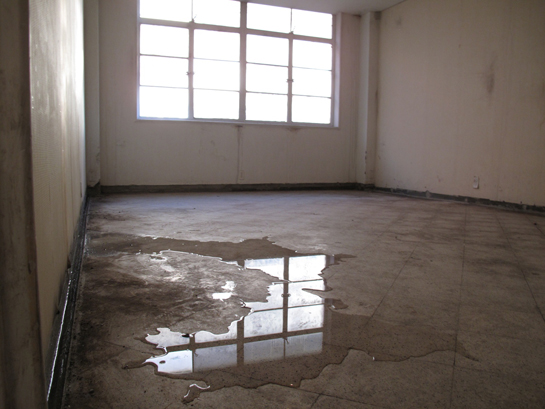Note: This article was originally written and posted in my column New York Tales, Flash Art Online,
In late October, 2013, contemporary art unfolded, the newest pages of a long history opening to a public and barrage of press who flew to the northern-most South American country for the inauguration of artBO, Bogotá and the 43 Salón (inter) Nacional de Artistas in Medellin. Being the capital, Bogotá is a large, industrious city on the verge of moments of change and global awareness. Various dichotomies of old and new world are relevant in a 360 degree angle. At 8,176 feet above sea level, the air is thin for those not used to high altitude living, however the second annual contemporary art fair artBO and Director Maria Paz Gaviria welcomed an international roster of writers, curators and artists to the mountain top city. Featuring 65 galleries in the main section and fourteen in the Proyectos Individuales (Individual Projects) curated by José Roca, most present were from Latin America and Mexico, however four New York galleries of note are Sikkema Jenkins & Co., Y Gallery, Magnan Metz and Johannes Vogt Gallery. From these four, Sikkema Jenkins & Co., Y Gallery and Magnan Metz were in the main section while Johannes Vogt was in the Proyectos Individuales showing artist Tatiana Blass who also had work concurrently on view in their New York gallery. At the time of the VIP Opening, Johannes Vogt himself was happy to report that all the paintings in the booth were already sold out. Sales being the purpose of a fair, this was very good news indeed. The individuals projects are what stood apart from the rest of the fair. Often gallerists, with the intention of selling as much as possible, often overcrowd their respective booths, and artists become difficult to distinguish. The Proyectos Individuales section allowed for the visitor to focus his or her attention on one particular artist showing with one particular gallery. Beyond the booth by Johannes Vogt, A Gentil Carioca exhibited an interactive installation made of string, nets and mechanized birds which were activated by turning a water-based hourglass 180 degrees. The work, by Paulo Nenflidio (1976, Brazil) required human presence to become physically activated. A Gentil Carioca in an experimental space in Rio de Janeiro founded in 2003 by Marcio Botner, Laura Lima and Ernesto Neto. |
|||
|
|
|||
| ArtBO commenced in 2005 and according to the many gallerists present, it is the best art fair in Latin America. Bogotá is easily accessible from many parts of the world with a large international airport and direct flights arriving daily. From New York, Bogotá is only five and a half hours away. This year, beyond the expansive main fair and the Individual Projects, other specially curated sections included the Artecamera Pavilion, an important part of the fair since it’s inception focusing on Colombian artists not represented by a gallery and under forty years of age. The Artecamera Pavilion was curated by Juan Sebastian Ramirez (1975, Paris, France, Lives and works in Cali, Colombia) and also happens to be the Associate Curator for the Tertulia Museum in Cali. This section felt a bit underdeveloped and while important for exposure, would have benefitted more from an umbrella or commonality of artistic focus allowing the work to interact on a deeper, aesthetic level rather than feel a bit haphazard at times.The most interesting artist here was Néstor Gutiérrez (Bogotá, 1980) who makes paintings accompanied by dimensional objects, therefore having a more active, direct conversation with his surrounding environment, the work appearing static yet with the possibility of fluidity in the chosen space. | |||
|
|
|||
| During artBO, several private collections and galleries not included in the fair were open to the public throughout the city. One of the most interesting spaces is run by José Roca, who curated the Individual Projects at the fair and has served as the Estrellita B. Brodsky Adjunct Curator of Latin American Art at Tate, London since 2012. As Artistic Director of FLORA ars+natura, an independent art space for contemporary art in Bogotá, Roca is able to use his own international taste and experience to curate a space that feels extremely fresh and includes a residency which during this time was New York based artist Mark Dion who developed the project Field Station Honda (2013), a rigorous body of work made in a collaboration with a small group of Colombian artists and Dana Sherwood, Dion’s wife. At the end of the residency and time of exhibition, the artist had constructed five cedar cabinets in which were postcards of birds, insects and spices of the region exquisitely illustrated by his local collaborators. The piece acts as a contemporary archive both new in it’s activation and timeless in the historical practice of documentation. In regards to this his position as Director of FLORA ars+natura, Roca states,“Having this space now [in Bogotá] called FLORA, [was chosen] because one of my interests is nature. It’s a personal taste and professional interest. However FLORAL ars+natura is also a wider scale and not about botanics. We also have a residency 4 hours outside of Bogotá where we bring residents to live and it can be a very harsh climate. In this case we worked with Mark Dion to help him produce this piece Field Station Honda (2013). We have a program where essentially, we invite artists to Colombia, they produce pieces and then we show the works. But we also have the vitrine [storefront] here, an exhibition space that changes every month, inside there is a small sound proof room for audio installation and sound art and as of January, the large exhibition space on the top floor will be divided into four studio spaces and will be [accompanied with] year long grants for artists, including an artist in residency and a curator in residency.”………. | |||
|
|
|||
| In entering the main venue, the Museo de Arte Moderno de Medellín, visitors were first greeted by a large, site-specific installation by Ernesto Neto. Utilizing stretched nylon, an oversized beanbag chair and sand for weight, Neto’s piece was accessible for those to enter upon removal of shoes. Probably one of Colombia’s most well-known contemporary artists, Neto’s install was perfect way to commence the biennale. In starting here, the viewer is immediately in realization of giving something up. Often in particular art situations we are forced to sacrifice something in order to fully be immersed in the artist’s vision or intention. Ernesto Neto provides the viewer something to walk around, a physical experience that is also completely bio-morphic and therefore aesthetically translatable in many ways. The second most well-known contemporary Colombian artist Oscar Murillo (Colombia, 1986) was surprisingly not present in Saber Desconocer. He recently graced the cover of Flash Art International (no. 292, October, 2013) and at a young age has shown globally especially after becoming part of the Rubell Collection in Miami, Florida with a solo exhibition/debut in December 2012. However, rather than just focus on the glitz and glamor of the art world, the curators actually selected artworks that all appeared to actively have a dialogue with space, politics and the anthropology of the human condition. Similarly to how Neto’s work begs for human engagement, much of the art in Saber Desconocer asked for the viewer to consider the rich, even if at times troubled past, of Colombia, the work somehow reflecting a much larger dialogue on history, diaspora and an indigenous component. | |||
|
|
|||
| Some of the strongest artists included Benvenuto Chavajay (b. 1978, Guatemala) whose install consisted of river stones connected with the rubber from flip flops, Mauricio Yekuana (b. 1984, Brazil) who makes very simplified digital drawings of traditional rugs that would normally be woven, installation painter Lucas Ospina (b. 1971, Colombia), Antonio Restrepo (b. 1985, Colombia) whose project focuses on the death of his father who was killed during the drug wars in Medellin by way of paintings, Giovanni Anselmo (b. 1934, Italy) probably the eldest of all the artists, Anselmo’s work Il sentiero verso oltremare, 1992-2013 inserted an Arte Povera discourse into the otherwise largely Latin conversation. | |||
|
|
|||
| One of the most unexpected and even radical works included in Saber Desconocer was a video made by Isael Maxakali of the Maxakali indigenous tribe, performing a superstitious ritual, rite of passage for children. The group is aware that with time certain traditions and beliefs can be easily misinterpreted or forgotten without modern-day documentation. The tribe performed a narrative whereas young boys are “buried” in a dark hole, only to then re-emerge as men. Somewhat echoing the death and resurrection of Christ, the children appear bereft of life, are mourned over and then placed inside a dark hole. The radicalization of the performative gesture and the documentation by video of what would have normally been passed down by verbal storytelling, not only raises the question of our relationship to history and ritual by way of documentation that is ‘performed’ for the sake of preservation. The work brings to the forefront the issue of art versus education versus sociological records. Produced with the knowledge and blessing of the tribe, the inclusion of the video/s in the exhibition is one of the most important and yet easy to disregard. The work acts as a looking glass, appearing to reflect the curator’s desire to examine the contemporary artists role in extracting a cross-section of a relevant past that is still vital in the present. By placing particular works into a large-scale art exhibition the viewer is granted the power of decision; When in the presence of contemporary art will you believe it to be fact or fiction? | |||
|
|
|||
| ArtBO, Feria Internacional De Arte De Bogotá was open from October 25th – 28th, 2013The 43 Salón (inter) Nacional de Artistas, Saber Desconocer (To Know Not To Know), was on view in various locations throughout the city of Medellín from September 6th until November 3rd, 2013. | |||
|
|
|||
|
|
|||
|
|

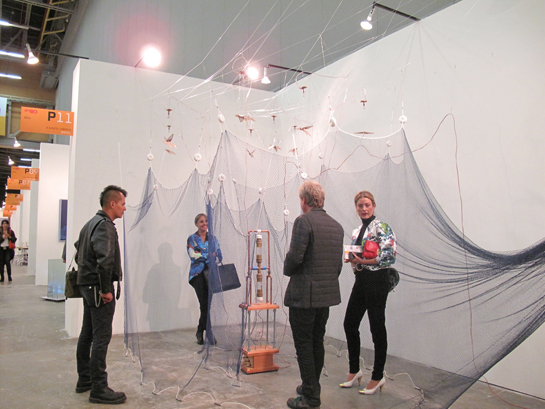
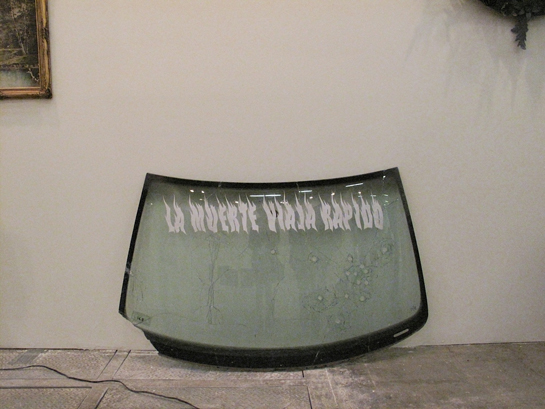
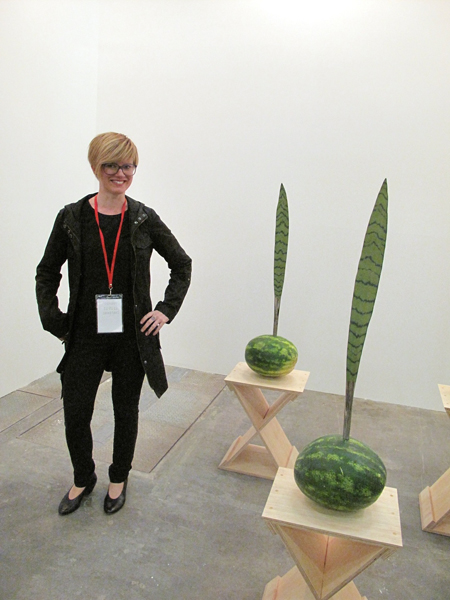

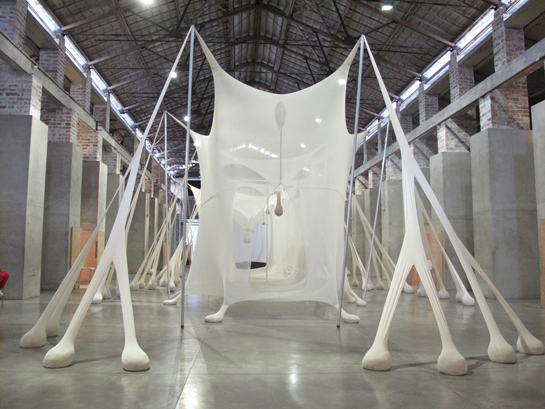
![Giovanni Anselmo, l sentiero verso oltremare [On the road to (blue) ultramarine], 1992-2013. Soil and Blue ultramarine. Partial View. Photo: Paolo Mussat Sartor, Turín. Courtesy of Archivio Anselmo, Turín, anf Kunstmuseum, Winterthur, 43 Salón (inter) Nacional de Artistas in Medellin, 2013](https://eyes-towards-the-dove.com/wp-content/uploads/2013/12/ArtBO6.jpg)
